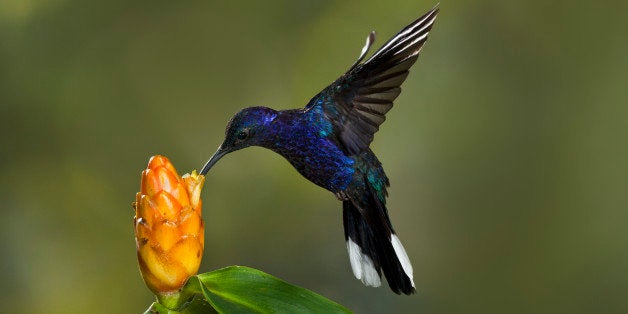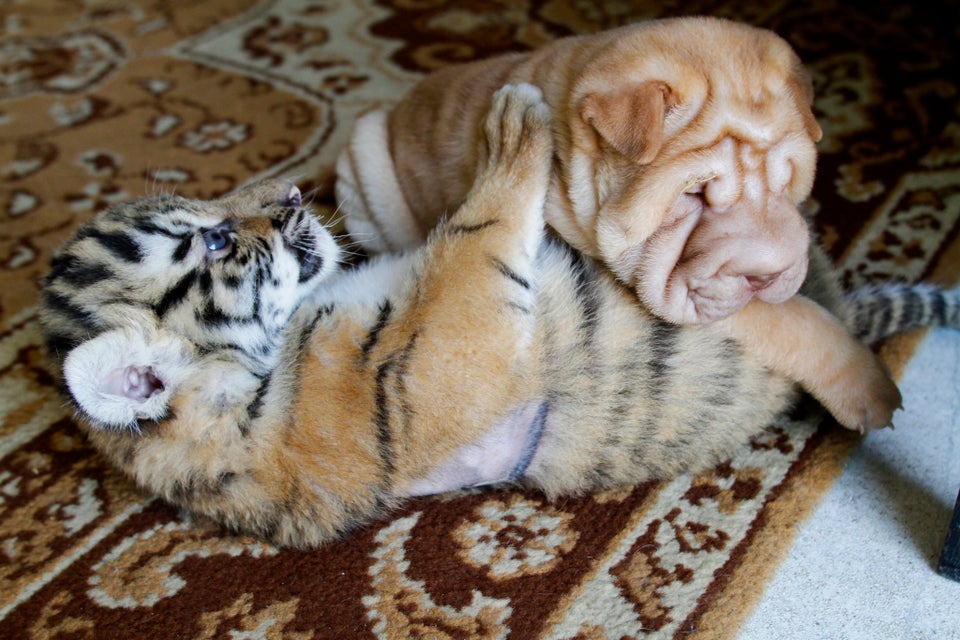
Time doesn't fly if you're a fly, a new study suggests. In fact, flies excel at dodging our slaps and swats because they perceive the passage of time more slowly than we do.
We tend to assume time is the same for everyone, but according to research published in the journal Animal Behaviour, it has different speeds for different species. Small-bodied animals with fast metabolic rates — whether they're house flies or hummingbirds — perceive more information in a unit of time, the study finds, meaning they experience action more slowly than large-bodied animals with slower metabolism, including humans.
If this reminds you of a certain 1999 science-fiction movie, you're on the right track. The study was led by scientists from Ireland's Trinity College Dublin, which issued a press release that explains the findings with a dusty pop-culture reference: "For example, flies owe their skill at avoiding rolled-up newspapers to their ability to observe motion on finer timescales than our own eyes can achieve, allowing them to avoid the newspaper in a similar fashion to the 'bullet time' sequence in the popular film 'The Matrix.'"
There's even variation within species, the study's authors suggest, since some human athletes can boost their eyes' ability to follow a moving ball during high-speed competition. Time perception also changes subtly with age, they note, possibly helping explain why time seems to move more slowly for children than it does for adults.
In the wild, however, many small-bodied animals likely rely on this "bullet time" for day-to-day survival, helping them stay a step ahead of their predators or prey.
"Ecology for an organism is all about finding a niche where you can succeed that no one else can occupy," study co-author and Trinity College zoologist Andrew Jackson says in a statement. "Our results suggest that time perception offers an as yet unstudied dimension along which animals can specialize. ... We are beginning to understand that there is a whole world of detail out there that only some animals can perceive, and it's fascinating to think of how they might perceive the world differently to us."
Jackson and his colleagues demonstrated this with a phenomenon called "critical flicker fusion frequency," which is based on the maximum speed of flashing lights an animal can see before it just looks like a steady, constant light — the same principle behind the illusion of non-flickering television. This is also why dogs have trouble seeing images on TV, the researchers point out, since canine eyes have a higher refresh rate than TV screens (not to mention lower visual acuity and less color perception than humans).
The study examined more than 30 different species, ranging from rodents, pigeons and lizards to dogs, cats and leatherback sea turtles. Time passes relatively quickly for the latter, larger-bodied group, the authors found, while the smaller animals seem to live their lives in relative slow motion. Not only is that an impressive ocular achievement, points out co-author and University of St. Andrews biologist Graeme Ruxton, but it also means we shouldn't underestimate the brains of insects and tiny vertebrates.
"Having eyes that send updates to the brain at much higher frequencies than our eyes do is of no value if the brain cannot process that information equally quickly," Ruxton says. "Hence, this work highlights the impressive capabilities of even the smallest animal brains. Flies might not be deep thinkers, but they can make good decisions very quickly."
More research is needed to understand how exactly animals use their slo-mo skills, but according to University of Edinburgh biologist Luke McNally, who also worked on the study, the new findings hint at aspects of animal life that may be invisible to our eyes.
"Animals may also use variation in time perception to send covert signals," he says, noting that many species — like fireflies and some deep-sea animals — communicate via flashing lights. "Larger and slower predator species may not be able to decode these signals if their visual system isn't fast enough, giving the signalers a secret channel of communication."
